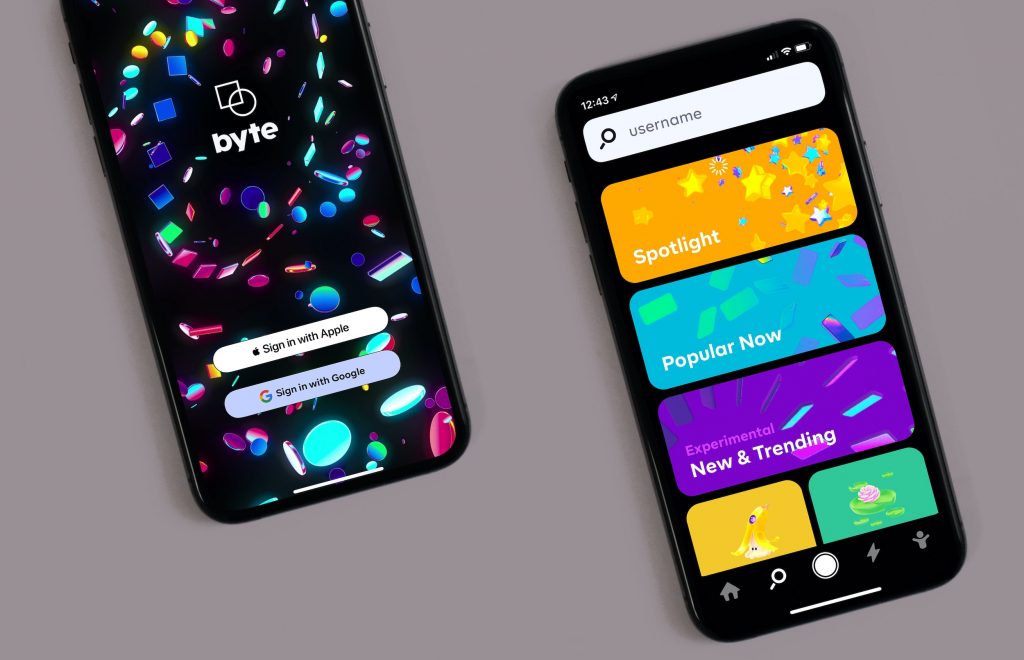
Key things you need to know about the architecture of applications
Table of Contents
Enterprises all over the world are turning to mobile apps as a means of reaching new customer segments proactively, solving customer problems effectively, or enabling internal teams to collaborate with a shared purpose.
According to Statista, during the first quarter of 2020, Android users could choose from 2.56 million applications in Google Play Store, boasting the largest number of apps. Apple App Store, on the other hand, occupies the second position with almost 1.85 million apps available for download. Adding these two numbers up doesn’t reflect the scale of the mobile market – consider hybrid or cross-platform applications created with technologies such as Progressive Web Apps.
Applications allow businesses to generate revenue in different ways, from charging users a small fee to offering premium features at a charge. If you’re wondering how to tap into the mobile market, this article is an excellent starting point.
One of the most important things to consider when building a mobile application is its architecture. That’s why we decided to dedicate our article to this topic to show you what a mobile app architecture is, why it’s so important, what are the benefits of developing it, and how to do it.
What is the architecture of application?
When building a mobile application, it’s essential that the development team takes extra care about its every component. Even the smallest problems can undermine the quality of the final product. And a faulty app is something few customers tolerate. That’s why every popular application we know and like is usually founded on reliable mobile app architecture.
Mobile app architecture refers to the structural elements and their interfaces from which we compose the system. It also describes the behavior in the framework of all the structural elements. Imagine a mobile app architecture as the skeleton of the program – the entire work is always determined by quality.
The architecture of application in mobile – key benefits
- If you miss out on an important element when creating your mobile app architecture, the project’s success is in danger. Proper mobile app architecture allows businesses to save time and generates fewer costs in the future.
- By having the right architecture, your mobile application will be independent of external resources. All of the successful projects we now see running on Android and iOS were first created by the manual labor of developers, not with the help of robust frameworks. This is why architecture should never rely on too many libraries. You can use frameworks and tools but never drive your system into their limitations. A mobile application architecture diagram should function regardless of the status of other programs or operating systems.
Problems originating from the lack of a mobile application architecture
Creating the right architecture should be a key step in the design and planning phase of software development. However, development teams often rush to start working or lack the experience and knowledge about it. As a result, they overlook architecture.
The lack of app architecture cause major problems as the software is
- more error-prone,
- difficult to develop and maintain,
- with less understandable and readable code.
Moreover, having many developers working at the same time might become difficult. And collaboration is what enables teams to build amazing digital products.
Then there’s the matter of testing. Source code without any architecture or design patterns will be much harder to test. This may result in missing unit tests for key functionalities. And the lack of test cases difficulties in maintaining the software – it makes refactoring, bug fixing, or regression control more challenging.
When developing a software project without planning the architecture or design patterns first, you are building a house without its foundation. Naturally, the larger the building is, the more problems this will cause.
Inexperienced developers or business leaders often rush to build an application without coming up with its architecture first. Eventually, they end up losing time and money on costly rework.

What is a good architecture of application?
Here are some traits of excellent mobile architectures:
- Good architecture is a profitable architecture that makes the process of developing and maintaining software simple and efficient.
- Such software is also easy to test and understand by other developers.
- Good architecture is universal and allows the installation of different plugins and easy troubleshooting.
- It’s not created using frameworks. The code needs to be from scratch. A successfully implemented mobile app architecture is where each layer is independent of other programs and components or entities. All the layers are connected by the Dependency Rule, which states that in the source code, all of the dependencies can only be specified internally. This applies to elements such as variables, classes, functions, or any other entity.
The architecture of application – Android vs. iOS
Android mobile app architecture
The classic system of creating an architecture for Android applications today is the Clean Architecture. It’s the best solution for the reliable operation of an app. This type of architecture allows applications to become independent of other frameworks.
Collisions between layers inside mobile apps architectures are carried out through boundaries – i.e., two interfaces, one for request and one for an answer. The interfaces are needed because they allow the layers to be independent of each other. The inner layer is independent of the outer layer, but it’s still possible to transmit data.
In order for a dependency in such a mobile application architecture to be directed towards the reverse flow of data, developers apply the principle of dependency inversion. Instead of Use Cases being directed to the Presenter, they depend on the interface in its layer.
iOS mobile app architecture
Developers can take advantage of several architecture patterns:
MVC – In this model, the Controller acts as a mediator between the View and the Model, so these two elements don’t know about each other.
MVP – In MVP, the viewController is considered as a view. This means that it includes only the code related to view. Instead, all the logic is implemented in the Presenter.
MVVM – The Model-View-ViewModel treats the view controller as a view and doesn’t tightly bring together the View and the Model.
Developing architecture of mobile app – best practices
1. Don’t include all of the ideas in the first version
To create a high-quality mobile application architecture, it’s critical to synchronize all of its processing capabilities. The development team might still don’t know which features will really be part of the future application. That’s why including all of the ideas in the very first version of your architecture is a bad idea. It will increase the development time, overload your app interface, and result in problems later on.
2. Assume the perspective of the customers
If you’d like to build a successful mobile app, it’s essential that you see it as the solution to a particular customer problem. That’s why conducting user research is so important – it helps you to understand your customers better and make the right decisions about customization. Who are they? What apps do they use? What navigation models are they used to? What is the problem, and how does your app solve it? Consider how you can make your mobile application more comfortable for them. Investigate industry-specific requirements as well.
3. Start with an MVP
Equipped with all the information about your end-users, you’re ready to create a solution that satisfies their needs and solves their problem. At this point, it’s time to consider the technology stack. For example, if you find out that your users like to use various platforms, consider cross-platform development technologies. Write a list of features, and then prioritize them to get the absolute minimum that gets your product out of the door and brings value to your customers. This approach is called the Minimum Viable Product (MVP). The right architecture for your app enables it to meet the demands of the end-users. Check in with your customers once in a while and test your MVP to understand the value it brings to them.
4. Optimize your project
Once you collect all of the key customer data, understand the basic functions of your application and analyze the constraints of your team, you’re ready to estimate the costs of developing your application. Coming up with the right architecture for a mobile app means achieving a balance between its requirements and your ability to cover them. Make sure to include the maintenance and support expenses as well. After all, building an app doesn’t end with the product launch. Review your technology stack and make the final decisions about the architecture of your app.
The architecture of application – a checklist
How can you tell whether your application architecture supports your development project in the best possible way? Here is a checklist where you can verify that:
- Flexibility – Is your solution easy to change and contains few errors? If you change one element, will it influence another one?
- Efficiency – Does the app perform tasks and functions in any condition? Is it effective, reliable, and able to cope with the workload?
- Testability – Is the architecture easy to test? Does the number of errors decrease, and the application’s reliability increase over time?
- Scalability – How much time does your application require for development updates? Does this time decrease or increase?
- Accessibility – Is the code understandable to all developers? Can they jump on your project quickly?
Conclusion
We hope that this article helped you see the value of a great app architecture to the success of mobile development projects.
If you have any other questions, reach out to us. Our mobile development experts have a lot of experience in delivering apps of different levels of complexity and know-how to build a mobile app architecture that matches the unique needs of our clients.